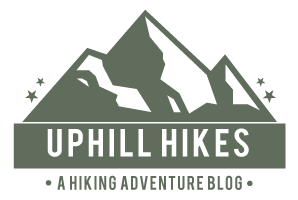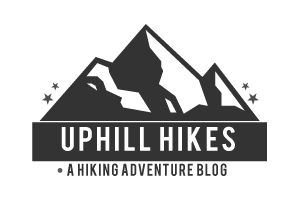
26 Dec Stiffknee Hike
Stiffknee In December
Day 1
December 20th 2009
Why would I leave on a snowy December weekend to go on a solo hike in a seldom visited North Carolina mountain wilderness area? Could it be that withdrawal symptoms are taking hold? A return to the solitude of the mountains and the adventure of the hike seems the best cure. It is time to notch another new trail on my backpacking waist strap.
At 4:30 AM on a Saturday morning I am pulling out of the neighborhood. Two and a half hours later, I am on the Tapoca Dam US Hwy 129 pull off on the southern side of the Little Tennessee river. I unload my backpack and stuff in a few last minute items found laying around in the backseat floorboard. US Highway 19 from Andrews, NC to Robbinsville, NC had been outlined with fresh white snowplowed ridges. The Cheowa river roared fiercely along the highway outside beyond Robbinsville as it spread outside its banks through the trees and plunged steeply over rocks down the mountain gorge. I worry about having to cross Slickrock Creek on foot while loaded with backpack. If it is anything like the Cheowa river, I won’t attempt it.
In the valley there is no snow cover. I climb the steep valley of Ike Creek and make my way back down to Slickrock Creek. Here are the first of two Slickrock creek crossings. I decide to keep things dry, so I try the crossing with pants, shoes, and socks strapped to the top of my pack. Stepping in, my bare feet immediately started slipping on the invisible submerged rocks. Not good, yet I am still in the calmer waters than swirl near the bank. I choose my steps more wisely and move toward the main show; the deep plunging central current. Feeling my way with bare feet across the this current, I step deeper and descend to my upper-thigh. I quickly feel my balance slipping way. Another step and I lean forward to grasp a large bolder in midstream. The bolder splits the center of the more powerful mid-stream. I move on 3 or 4 more feet, crossing the next chute before finding the safe calm waters along the far bank. A good feeling, but now I have 2 days to worry about further snowmelt swelling the stream before I make my return crossing. At least it will be a few miles upstream.

Slickrock Creek Crossing

Safely Across Slickrock Creek
I continue up the far bank along the Slickrock Creek trail for 0.6 miles before turning west on Stiffknee Creek trail. The trail regularly traverses a creek just big enough to be impossible to rock hop. I give up the idea of dry boots. By now, with rising elevation, the snow is deep enough that my boots would have been wet in any event. I see no others out here. No human footprints; only the tracks of a canine’s sedulous and focused procession along the trail. A coyote would have given the trail up. This had to be a lone dog. I tire of creek crossings and my wandering mind celebrates each time the trail pulls up the hill and away from the creek. A few miles in, the 3.4 mile Stiffknee trail begins its ascent to the ridge and the snow deepens a couple of inches. The dog tracks continue.

StiffKnee Trail Dog Tracks
I reach the parking pull off at the intersection of FS-59 and Fodderstack Trail. The dog tracks leave me as they take toward the Forest Service Road. Several 4 wheel drive tracks mark the snow along the winding road. I turn onto Fodderstack Trail and resume climbing. Near the Little Tennessee River where I set out, the elevation was a very low 1160 feet; however, I now climb as high as 3640 feet. Snow deepens to about 5 inches and snow begins to fall. Lightly at first. I find a signal and call Maura. I ask her to write down the names of the trails where I am hiking. I had forgotten to leave an itinerary. Still haven’t seen other people.

Taking a break nearby to call Maura.

On Fodderstack Trail
At 2:30 PM, it is still early, but in the snow, 10 miles of hiking seemed like a good 13. At this time of year I am only 3 hours from dusk. I stop at Big Stack Gap (3360 feet elevation, snow depth 5 inches) to make camp. Tossing the backpack under a tree, I begin using one of my Crocs to clear snow for my sleeping spot. Taking a break, I notice that my sleeping pad is missing. It is fallen off somewhere up the trail. I halt the snow removal to hike back beyond the Crowder Trail turnoff to recover the Wal-Mart blue foam pad where it lay near one of the snow bent rhododendron branches that I had pushed through. Before nightfall, I make a 2nd side trip down Big Stack Gap Trail to find water. Fortunately, it is very close. Tim Homan’s trail guide states that there is no water through this section of Fodderstack. It neglects to mention that water can be had with a short detour down Big Stack Gap Trail.
I resume my snow digging and set up my tarp with snow banked to the sides. With pride I snap a photo of my winter snow camp. I eat a little tuna wrapped in tortilla. Though only 3 PM, I lie down in my down bag and fall asleep.

OLYMPUS DIGITAL CAMERA
My Tarp Tent before it sags under another 4 inches of snow.
I rise in about an hour, but don’t feel hungry, walk around a little, bored. Listen to podcasts and finally feel a little hungry as the sun disappears. It is snowing harder. I cook the Stovetop Stuffing. I add chicken and a little more stove fuel to warm the chicken. It is dark and I see steam coming from the lid. A minute later I smell a burning. In tight quarters, had I leaned too close over the flame? I check my fleece hat for scorching. No, the smell was from Stovetop Stuffing à la carbon. I eat it anyway. It continues to snow. Not much to do. I am in my Crocs and I don’t want to walk around outside in the deepening snow. I listen to more podcasts until I fall asleep. Suffering from nocturia as typical of men my age, I need to get up to relieve myself several times. It is a laborious process. No room to maneuver in this tiny tarp and sleeping bag. I extricate myself and unclip my rigged Tyvek tarp opening. Snow drifts in. My last dry pair of socks are off my feet and stowed away to dry so I am barefoot. Even my Crocs tend to drag snow back under the tarp and onto my down bag and clothing, therefore I go unshodden into the snow. My bare feet sink into the several inches of new crystals on top of the 5 inches already there. Feet become numb while standing in the snow. I carefully insert myself back in under the tarp headfirst while hanging my feet out the opening. I rub away the droplets of snow melt before pulling my feet under the tarp. I then contort as I turn head to feet and feet to head. To prevent mopping of condensation onto myself and my bag, I attempt to avoid brushing against a snow and mosture weighted ceiling that progressively sags. Impossible! The outer layer of my down bag becomes slick wet. I then struggle in the dark with little black office paper clasps that I use to attach a triangular patch of Tyvek across the tarp opening. This process repeats. In between, I suffer long periods of one discomfort in exchange for postponement of another.
The snow deepens and collects on the tarp. The tarp gradually shrinks and hugs the sleeping back at my waist and legs. Only a little space exists at my head and feet where hiking poles support what is familiarly called Sil-Nyl by us hikers. The product label would use the longer appellation of Silicone Impregnated Nylon to describe this highly desirable high-tech lightweight fabric. The sleeping bag drips as the tarp takes on the dimensions of a bivy covered in 4 inches of fresh snow. I hear the pelting snow, sometimes hard, sometimes light, but all night.


